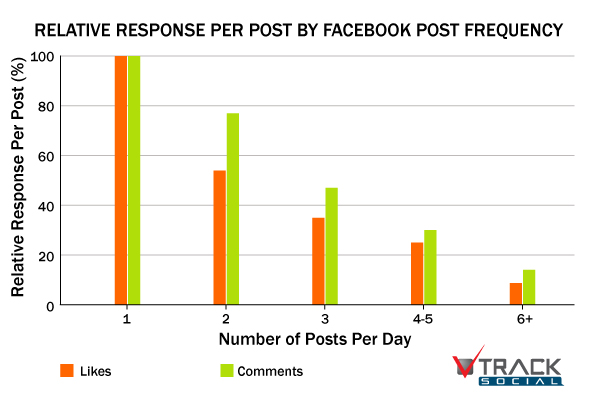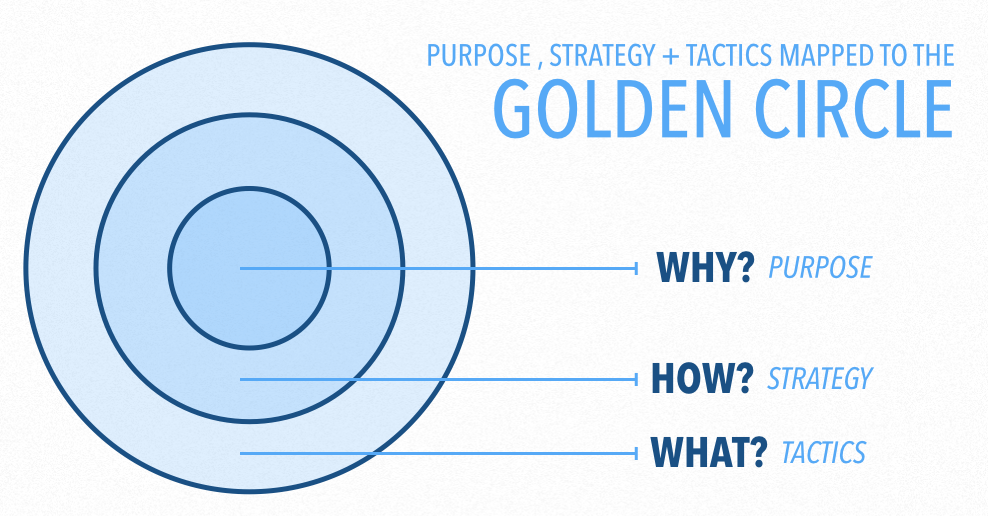
It’s a problem when your marketing starts to feel too much like marketing. Really, marketing tends to backfire once your audience becomes aware of it.
Investing too heavily in any one channel, being too persistent or just generally coming on too strong are all to be avoided.
In this article, I will make a case for why all marketers must find a calculated tactical balance, and will then provide guidance as to how to achieve moderation with your marketing.
Marketers Ruin Everything
Marketing thought-leader and digital powerhouse Gary Vaynerchuk once famously quipped:
There’s one thing I know more than anything, more than the fact that I know the sun will come up tomorrow, the thing that I know is that marketers ruin everything.
This is true in large part because of the discipline and craft of data-driven marketing.
Let me explain.
As quantitatively-inclined digital marketers, our core objective is to test meticulously and optimize our processes until we arrive at a set of best practices that consistently achieve the best possible results.
Sounds great, but the problem is that when us marketers find the perfect thing we (naturally) tend to go all in. We can’t help ourselves.
After all, we ran the numbers, and so long as ROI is positive, ruthlessly pursuing these tactics is like printing money.
The problem with this purely data-driven outlook is that it can blind us to the long-term ramifications of such an “all-in” strategy.
Relying on experimentation and experience is the foundation of all scientific reasoning, but causal relationships don’t always generate measurable results.
Philosopher David Hume’s famous “Problem of Induction” addressed this flaw and framed it like this: the inference “all swans we have seen are white, and, therefore, all swans are white” is proven wrong once you find one exception, the black swan.
In our case, the problem can be reframed as “if all eBooks were ROI positive in the past, therefore all ebooks will always generate good returns.”
The quantitative marketer will see nothing wrong with this statement and keep pursuing the same strategy until the statement is no longer true.
In my mind, the really talented folks over at HubSpot have pushed the limit of their flagship content marketing product in this way.

Don’t get me wrong, I still love HubSpot’s eBooks and other content; and there is something nice about the consistency, but being inundated with them constantly for years has worn out their novelty and efficacy for me.
Being too persistent with any one tactic or channel runs the risk of taking a perfectly potent approach and spoiling the power of the method you worked so hard to hone.
Chaotic Systems
In essence, one of the biggest problems with a purely quantitative approach to marketing is that scientific testing and experimentation requires you to assume certain things always hold true within a given system like with email marketing, on a social network or elsewhere.
However, these assumptions of normalcy can break down when a system reaches a certain threshold and begins to change itself.
This idea is present in chaotic systems where there are multiple factors at play that interact with one another consistently.
For instance, the reason you can predict the weather fairly accurately is because the act of prediction does nothing to affect the system.
The stock market, on the other hand, is inherently unpredictable because once a good enough prediction arises that prediction will affect investor behavior and fundamentally change the system.
Marketing can be a chaotic system, meaning you need to be very careful when constructing plans and predictions. This is due to the fact that your own assumptions can affect the quality of your forecasts and strategies.
Not practicing moderation with marketing has the potential to ruin your hard work.
Diminishing Returns
Another important idea reinforcing my assertion that moderation in marketing is crucial comes from the world of economics. This principle (that you may recognize from Econ 101) is commonly referred to as “the law of diminishing returns.”
A fairly simple idea, this law states that as you incrementally increase one factor in the production of a given item, the overall effect of that factor on output will gradually decrease.
There couldn’t be a better way of stating the need for practicing moderation with your marketing. The more you ramp up one single factor of production (in our cases a marketing tactic) the less that factor matters for advancing your objectives.
This is the mechanic that makes marketing an even more chaotic system. The law of diminishing returns can hinder the effectiveness of a strategy for any audience you over-expose.
One email a day can provide great returns for a very long time, but doubling the emails might poison the water and cause that tactic to be less effective not just in that one instance, but for all instances going forward.
In fact, the law of diminishing returns has been proven (more than once) to apply to various aspects of marketing as seen here with the falling responses rates from posting more frequentely on Facebook.

How to Practice Moderation
Now that I’ve illustrated the need for moderation, let’s explore how to actually implement it.
Perhaps the most important element of moderation is to consider each separate marketing tactic as a means to a larger end.

If all of your tactics are thought of as simply part of your larger purpose as an organization, then it will be easier to naturally adjust your approach when they contribute a diminishing return to your efforts.
Thought of within this broader framework, the reason for diminishing returns is because past a certain point, any given tactic will no longer serve the larger purpose of a content marketing effort.
Ebooks, emails or tweets might help to reinforce a content marketing effort with purpose, but there are certainly limits for each.
Beyond a critical threshold, pursuing a specific channel or tactic any further will either cease to be very effective, or (worst case scenario) it will start to become counter-productive.
As I mentioned in the introduction, this point of counter-productivity is most often seen when the end consumer becomes consciously aware of any one marketing channel or method.
A really fantastic example of a healthy marketing mix is Bonobos, and because their brand mission comes first, each of their separate marketing components are exercised in moderation.

Their emails are consistent, yet not overwhelming. Their Facebook presence is engaging, but not annoying. Their Instagram is always there, yet never in your face.
Each marketing channel and tactic reflects their mission of making shopping for men’s clothing painless and more personalized.
They might make it look easy, but there is a well calibrated balancing act in play to achieve something like this.
Another stellar example of marketing moderation and diversification is General Electric.
For a company that does so many things, and is running many overarching campaigns and lines of business concurrently, they somehow manage to strike a great degree of balance with their content marketing.
By pursuing micro-campaigns and cleverly segmenting their brand messaging, GE is able to engineer a unique approach to each channel and campaign instead of just dumping ad spend across their entire brand haphazardly.

A shortlist of GE’s most recent, highly successful content campaigns includes: a sponsored post with Mic Magazine, a successful long-form research portal, and even a critically acclaimed podcast.
Each of these various efforts necessitates a social media presence to spread the word, and supplementary content and outreach to support the core content. Yet, the whole approach self-balances because all of these various strategies are simply means to an end.
The end is fairly clear for those who follow GE’s brand: their mission is to not only pursue innovative technologies, but demonstrate how these innovations can be put into action.
In fact, they don’t even leave their mission up to interpretation. They spell it out in their tagline below their logo: GE imagination at work.
The main takeaway from this piece should be to focus on pursuing strong marketing tactics that are optimized, but to not be tempted to go all-in on any single one.
Instead, make sure to balance your approach by mixing the marketing channels you’re using and experimenting with new campaigns, which should all connect back to your underlying brand purpose.
Continue to ask if the strategies you’re using are advancing or retracting from your greater brand purpose in the long-run.
This will help you avoid running up against diminishing returns or (even worse) killing your golden goose via over-eagerness.
When it comes to marketing tactics, moderation is key.


